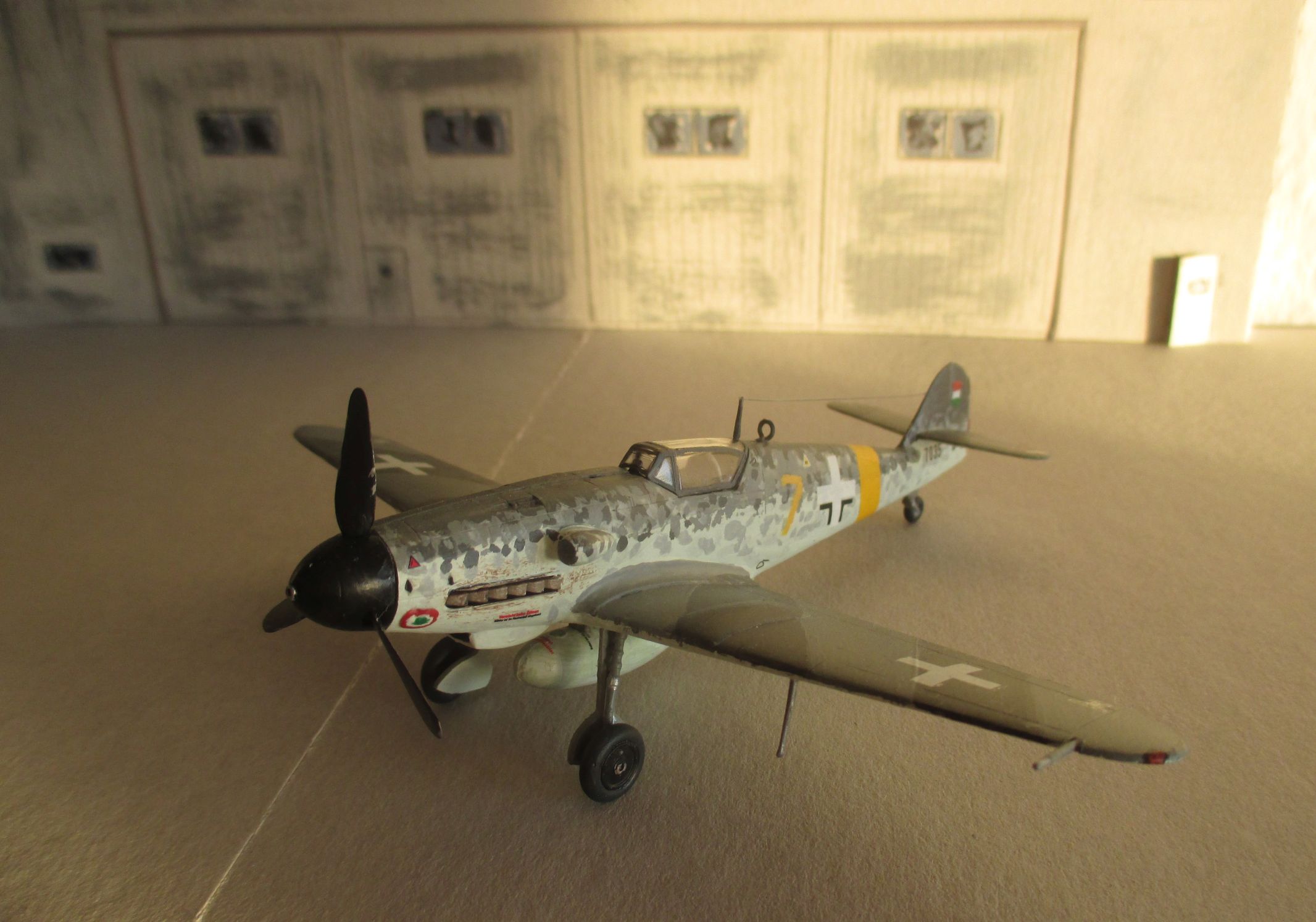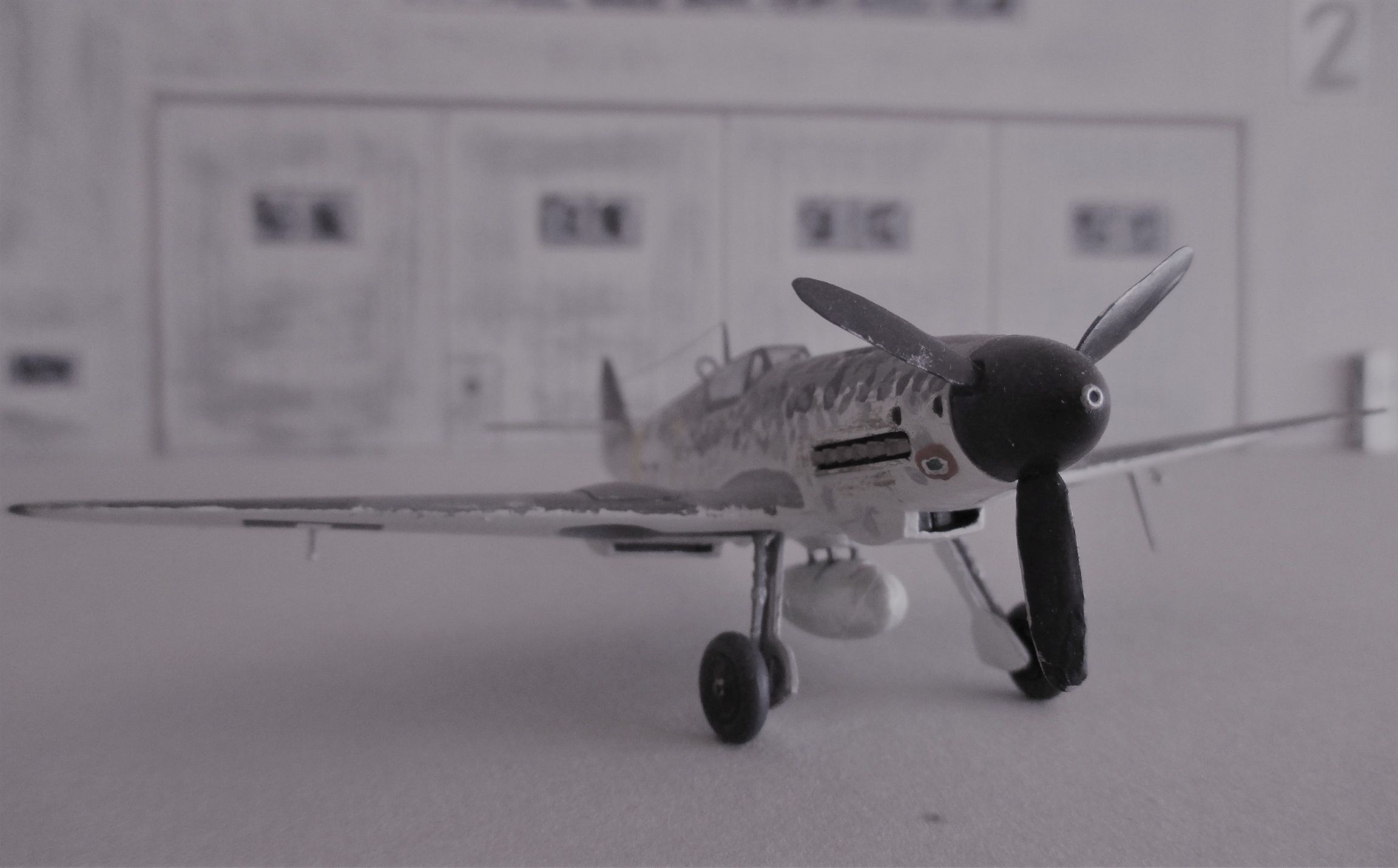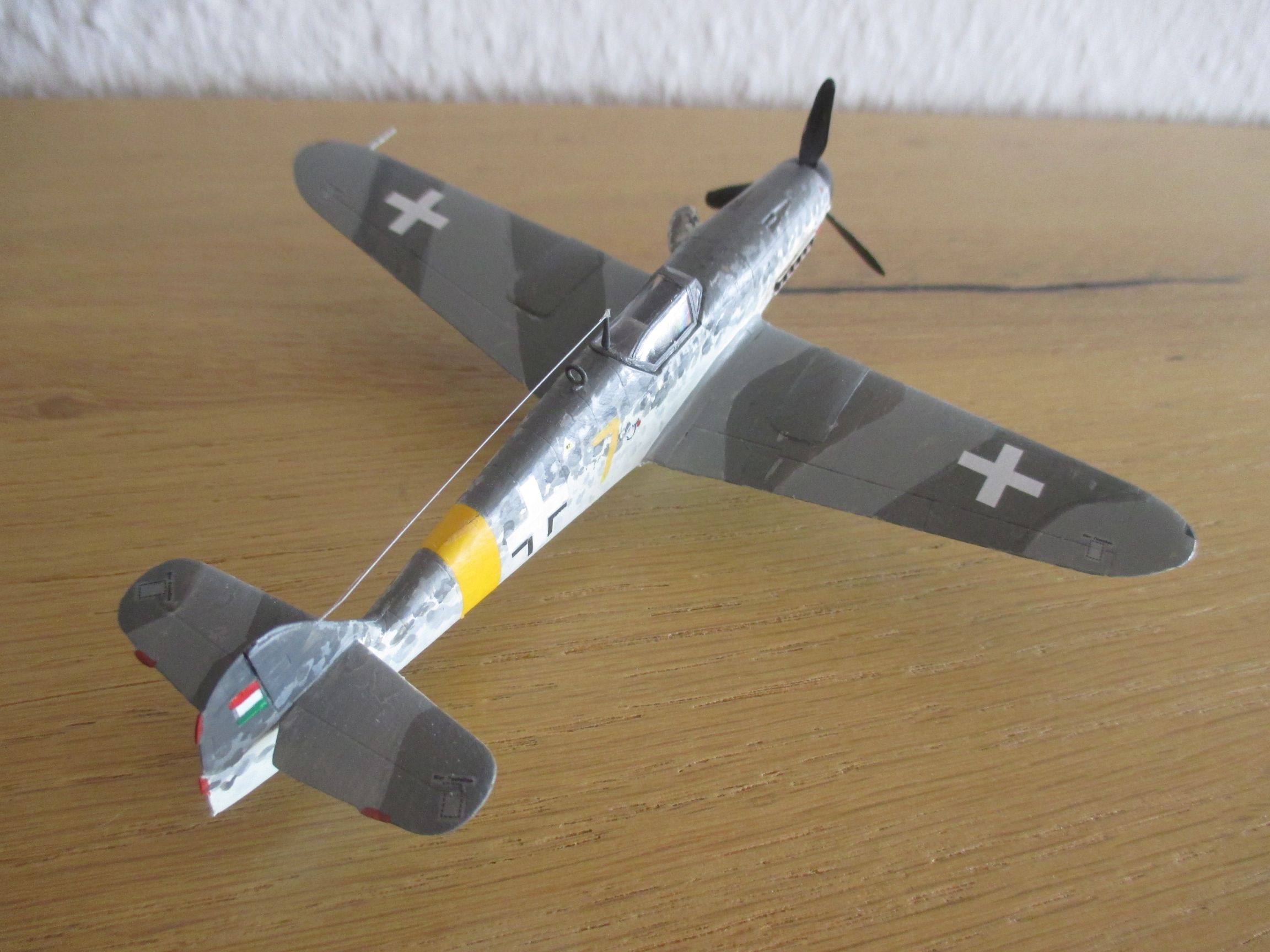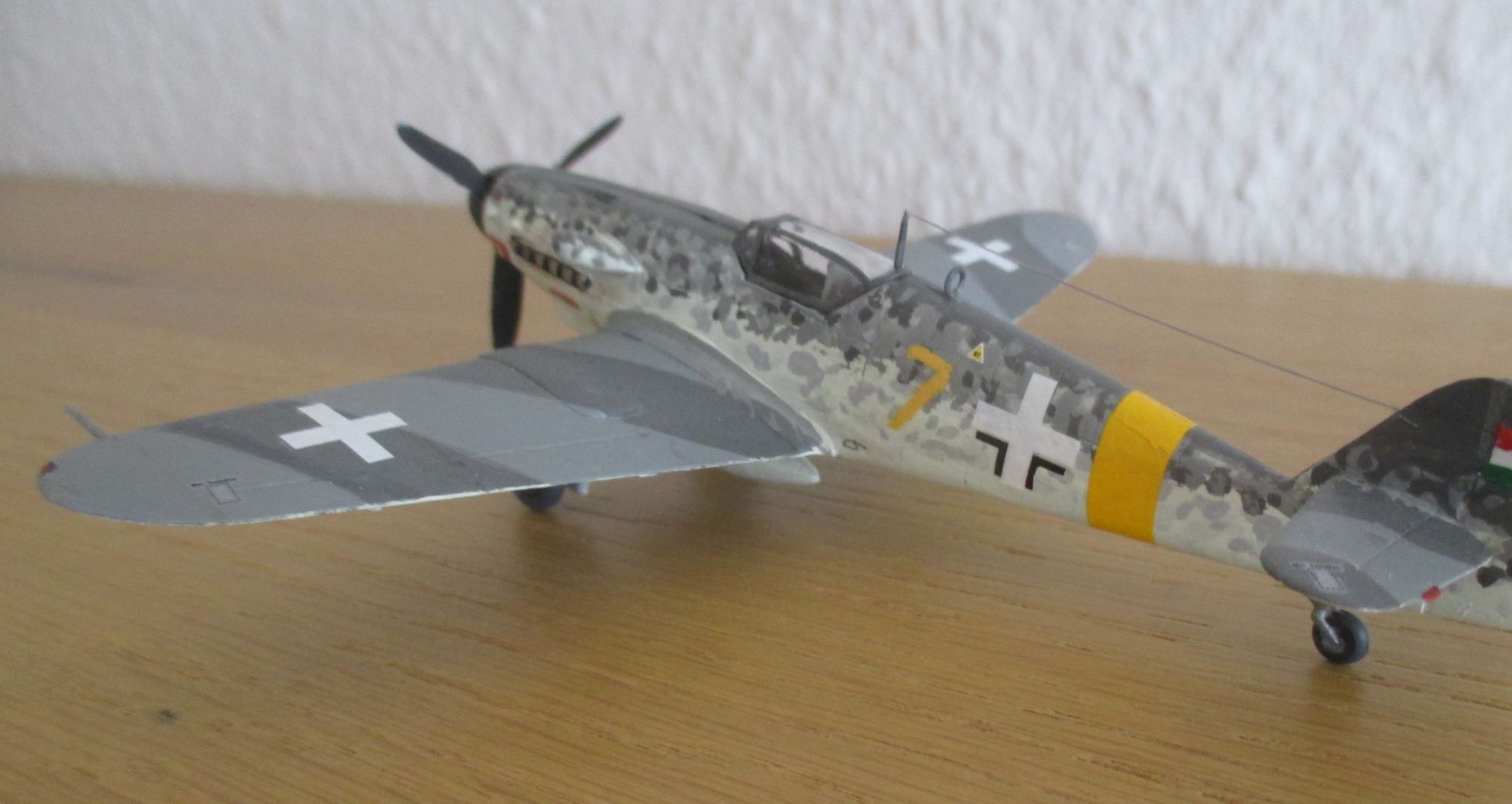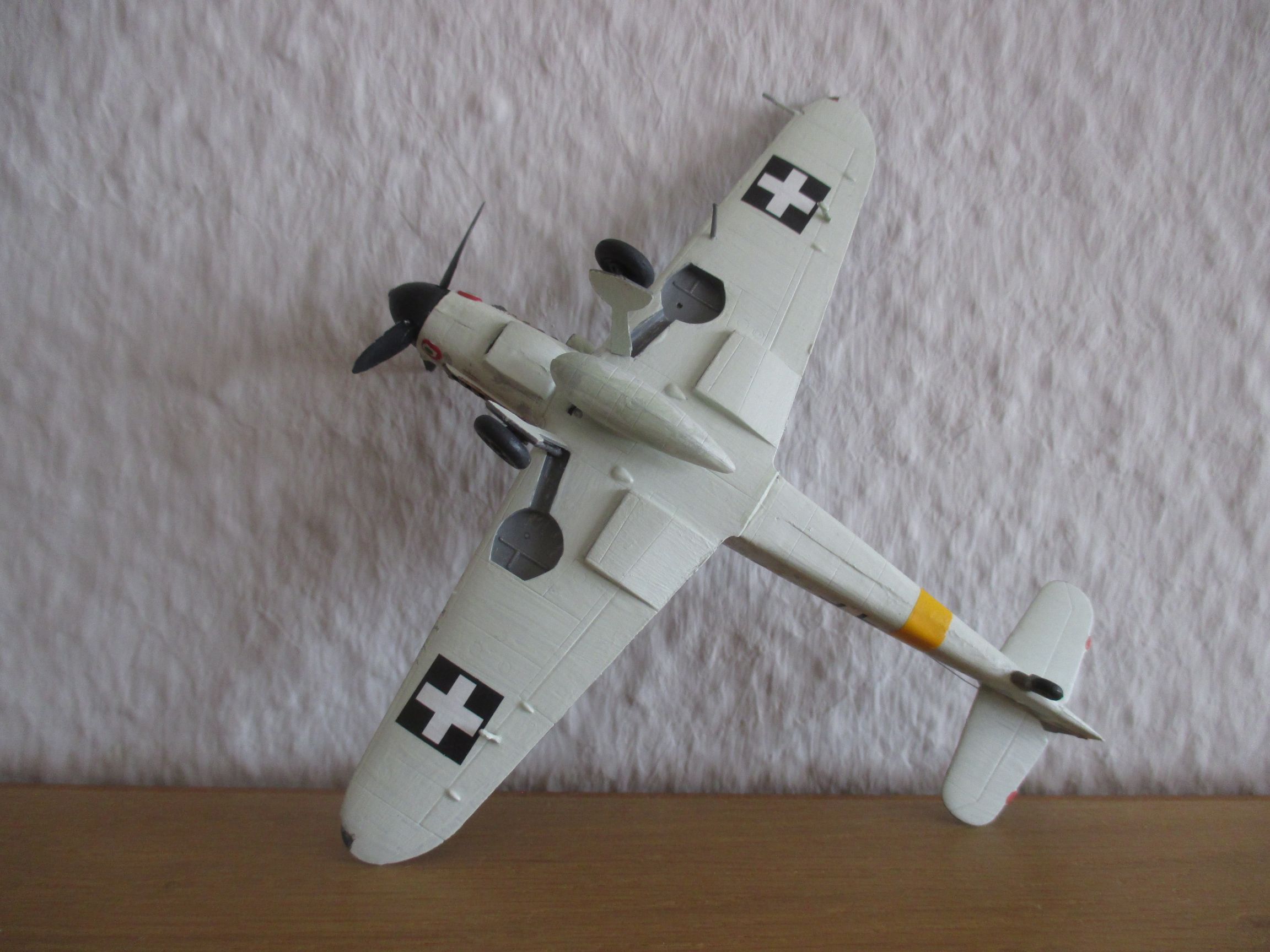Modell des Monats Juli 2022 Me Bf 109 G-10
The Me Bf 109 G-10
From the original to the model
An independent part of the collections of the Aviation Museum Hannover-Laatzen are the more than 1,000 scale models, mainly of the international standards 1/72 and 1/48.
Such true-to-the-original miniatures enable viewers of museum technology history to get an "overview", not only of the individual exhibit (sometimes even as the only possibility of a three-dimensional display if there is no longer a preserved original), but also of lines of development in aircraft construction by means of the possible arrangement and juxtaposition here; sometimes they even close gaps in the presentation of the originals. Their craftsmanship alone is a pleasure to behold.
In our 'Model of the Month' series, this time we present the Messerschmitt Bf 109 G-10, the last version of the standard fighter aircraft built in significant numbers by the German Luftwaffe and its allies in the Second World War.
The Aviation Museum is exhibiting a fully restored G-2 salvaged from the Mediterranean, various examples of the Daimler-Benz DB 601, 603 and 605 engines as well as models of all series of the "109" in the usual scales.
The model: The 109 G-10 from Revell in 1/72
Meanwhile already a classic like its prototype is the Revell kit from Bünde with 37 parts plus decal set from the 1990s. Neatly executed, finely detailed and accurately fitting, it gives a choice of two German Luftwaffe aircraft in the last winter of the war. However, we opted for a fighter of the Royal Hungarian Armed Forces from the spring of 1945.
The original: Dying Swan
The "109": designed and put into the air in 1935 under Prof. Willy Messerschmitt at the Bayerische Flugzeugwerke in Augsburg, it is a superlative of aviation. With around 35,000 units it is the most-built German aircraft to date, the world's most-built fighter (probably in total, but at least of all piston engine aircraft) and the aircraft type on which the most aerial victories have been achieved. Record holder and winner of numerous air competitions in the years leading up to World War II, the single-seat all-metal low-wing monoplane with retractable landing gear and enclosed cockpit was a milestone of aviation and the standard fighter of the second German air force. It was also in service with almost all allied and some neutral countries until 1945 - and in some air forces even years beyond.
Cutting-edge technology until the F series and into 1942, the G series was the necessary attempt to balance performance and robustness, diverse tactical profiles, and production simplification of the type. The Focke-Wulf 190 took the performance lead in German fighter armament until the appearance of the Me 262. Enemy developments increasingly outstripped the "109" in terms of design - but the pilots who had become "aces" on it absorbed this loss through familiarity with and confidence in the aircraft, keeping the type in the lead in the operational statistics. Meanwhile, the development team in Augsburg worked feverishly on continuous optimization: fitting more powerful engines and armament into the small airframe without sacrificing aerodynamics. At the same time, the raw material and production situation was becoming increasingly strained, and it was becoming an immense challenge to do so without compromising mass production.
Interception
While the G-6 version was still the classic compromise of performance, operational spectrum and front-line capability, the wartime situation in 1944 allowed only the requirements of pure air defense against a now overwhelming alliance: climb performance, service ceiling, speed and firepower. With the Daimler-Benz DB 605 D, 685 km/h and armament up to a 30 mm MK and two 13 mm MGs, the G-10 was the fastest and most powerful version of the 109, a pure interceptor - and yet only in the hands of experienced pilots equal to the best Allied designs. Aerodynamically cleaner than the G-6 and more similar in appearance to the F series, the wartime situation and the omnipresent shortage of personnel, material and fuel on the German side at the turn of the year 1944/45 mostly leveled out the strengths of this design. Thus, the distinctive engine noise of the G-10 became the swan song not only of the 109, but of the entire Luftwaffe.
Under license
The Royal Hungarian Air Force, Magyar Királyi Légiero in the Hungarian language, continued to receive various aircraft types of German origin until shortly before the end of the war. In addition to the Me Bf 109 of the F and G series, these included significant numbers of the twin-engine Me 210, the Junkers Ju 86 and 87 bombers and the Focke-Wulf Fw 189 close range reconnaissance aircraft.
The Me Bf 109 was also built there under license; some of those examples even went to the German Luftwaffe. The last versions of the 109 to reach the Hungarian Air Force in small numbers were G-14 and G-10. Our model shows one such aircraft from the Battle of Budapest from December 1944 to February 1945; these were the last coordinated missions of the Magyar Királyi Légiero.
sb
A Me Bf 109 G-10 of the Hungarian Air Force from the Revell kit in 1/7
The permanently mounted auxiliary tank was standard from the G series onwards, the DB 605 D together with the heavy armament made an over-painted nose fairing of the G-10 necessa
The last version of the 109 was in service until the end of the war, including the battle for the Hungarian capital.
As with the German Luftwaffe, the colour scheme and markings of the Hungarian aircraft at the end of the war were determined by strict visual protection. The paint on our model was applied was done exclusively by brush.
Only the underside still offered the full nationality markings in spring 1945.
"Family photo": A G-10 of the II. group of JG 7 as provided by the Revell kit and our Hungarian version.

